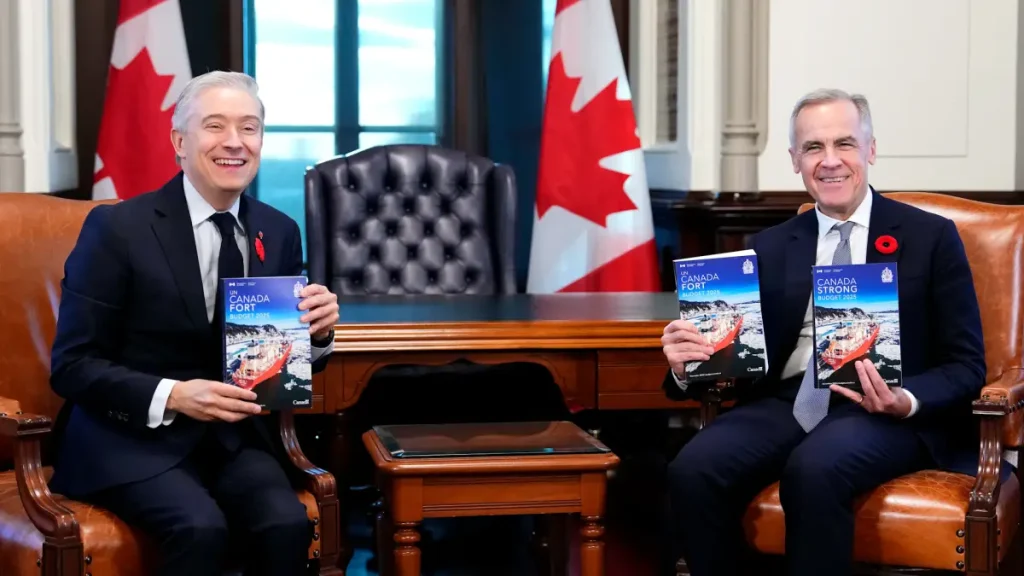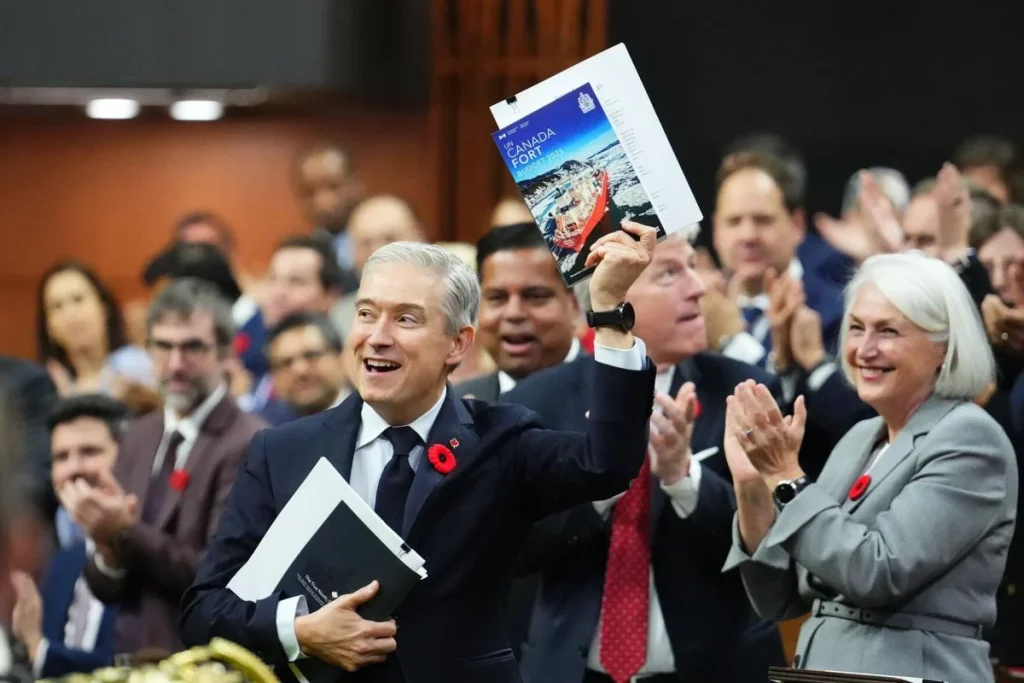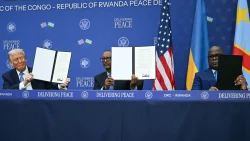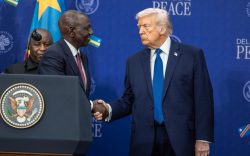When Finance Minister François-Philippe Champagne stood before the House of Commons to present Canada’s 2025 federal budget, the moment felt historic.
It was Prime Minister Mark Carney’s first major test in office—and his blueprint for turning Canada into what he called “the strongest economy in the G7.”
The 2025 budget, running hundreds of pages, is more than a fiscal roadmap. It’s a recalibration of Canada’s identity in a changing global order—an era the government describes as a time of “significant change not seen since the fall of the Berlin Wall.”
Here are the six major takeaways—and what they mean for the African diaspora in Canada and beyond.

1. A Big-Spending Plan With Big Sacrifices
Carney’s government is betting on massive investment to stimulate growth: C$280 billion in total spending, which could push the federal deficit to C$78.3 billion, the second-largest in Canadian history.
The plan covers highways, ports, energy grids, housing, digital infrastructure, and productivity initiatives—seen as catalysts for attracting C$1 trillion in private-sector investment within five years.
But the budget also calls for “shared sacrifice.” Ottawa aims to cut 40,000 public-sector jobs by 2029 and trim federal ministries by up to 15 percent, saving an estimated C$60 billion.
For the first time, Canada is formally distinguishing between operational spending (day-to-day operations) and capital investment (projects that grow the economy).
2. Looking Beyond the United States
Canada’s economic future will no longer depend almost entirely on its southern neighbour.
Historically, about 70 percent of Canadian trade has flowed to the US, but recent tariff tensions have pushed Ottawa to diversify. The new goal: double non-US exports by 2035.
The budget sets aside funds to help Canadian companies enter new markets across Europe, Asia, and Africa, including support for legal fees, market research, and risk mitigation.
Corporate taxes will drop from 15.6 percent to 13.2 percent, a move meant to undercut US rates and lure global investors.
There’s also C$1.3 billion to attract international researchers—creating opportunities for cross-border academic partnerships.
3. Canada’s Bid to Become a Clean-Energy Superpower
Carney’s climate vision is rooted in investment rather than restraint.
The government plans to accelerate low-emission projects—from small-modular nuclear reactors and low-carbon LNG to carbon-capture technologies.
A Climate Competitiveness Strategy will replace Trudeau-era emissions caps, keeping the industrial carbon tax while promising long-term policy stability for investors.
The aim: position Canada as a “clean-energy superpower” and an innovation hub for green technology.
4. Record Defence Spending
The budget pledges to raise defence spending to 2 percent of GDP this year and 5 percent by 2035, investing C$81.8 billion over the next five years—the largest increase in decades.
The plan covers salary raises for armed forces, investment in space-launch capability, and a C$1 billion commitment to Arctic infrastructure.
Carney has framed the expansion as essential to both national security and northern economic development.
5. Reversing the Trudeau Era
Several signature policies from the previous administration are being dismantled.
The unpopular consumer carbon tax is gone, as are the luxury-goods levy and the “Two Billion Trees” programme.
Immigration targets are also being sharply reduced. The annual cap on new temporary residents will fall from 673,650 to 385,000 next year, while permanent-resident admissions are set at 370,000 for 2027–28.
However, 33,000 work-permit holders will be fast-tracked to permanent status—a signal that Canada still values skilled labour and talent retention.
6. Easing the Pain of the Trade War
Facing sweeping US tariffs of up to 35 percent on Canadian goods, the Carney government is deploying C$5 billion in targeted relief for affected industries, plus a C$10 billion loan facility to support struggling but viable firms.
A new Buy Canadian Policy will prioritise domestic suppliers for government projects.
The goal: protect Canadian jobs, stabilise supply chains, and rebuild industrial confidence.

What It Means for Africans in the Diaspora
For Africans living, studying, or investing in Canada—and for those abroad considering migration or business expansion—the 2025 budget carries weighty implications.
1. Tougher Immigration Pathways
With lowered immigration ceilings, the competition for Canadian residency will intensify. African professionals may need to highlight their economic value—through skills, entrepreneurship, or capital investment.
Diaspora networks could become crucial platforms for mentorship, sponsorship, and community advocacy.
2. Business and Trade Opportunities
As Canada diversifies its export markets, the African diaspora stands to play a pivotal role in linking Canadian and African economies. Entrepreneurs with continental ties can serve as gateways for trade and innovation between both regions.
3. Clean Energy and Critical Minerals Partnerships
Canada’s C$2 billion Critical Minerals Fund opens new avenues for Africa-Canada collaboration, particularly as many African nations hold vast reserves of the minerals vital to renewable-energy technology.
Diaspora experts in energy, mining, or sustainability are uniquely positioned to advise or partner in this transition.
4. Education and Research Exchange
The C$1.3 billion investment in global research talent could benefit African academics and students, encouraging cross-continental innovation.
It’s also an opportunity for diaspora organisations to champion cultural exchange and capacity-building initiatives.
5. Affordability and Community Resilience
Despite the budget’s ambitious plans, economic growth will remain modest—projected at just 1.1 percent in 2025.
Rising living costs may strain new immigrants, so diaspora support networks and community mentorship programs will be more important than ever.
Ultimately, Canada’s budget signals a new era of global re-positioning. For Africans in the diaspora, it’s a call to adapt, align, and lead—turning dual heritage into strategic advantage in a rapidly changing world.








